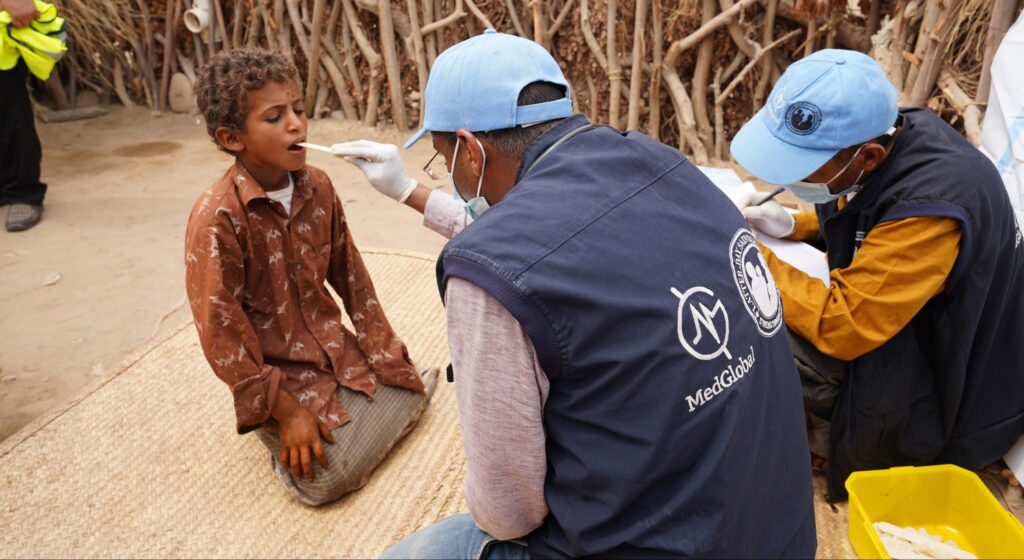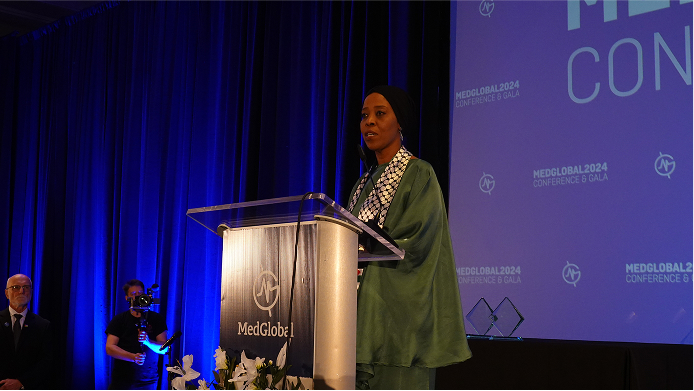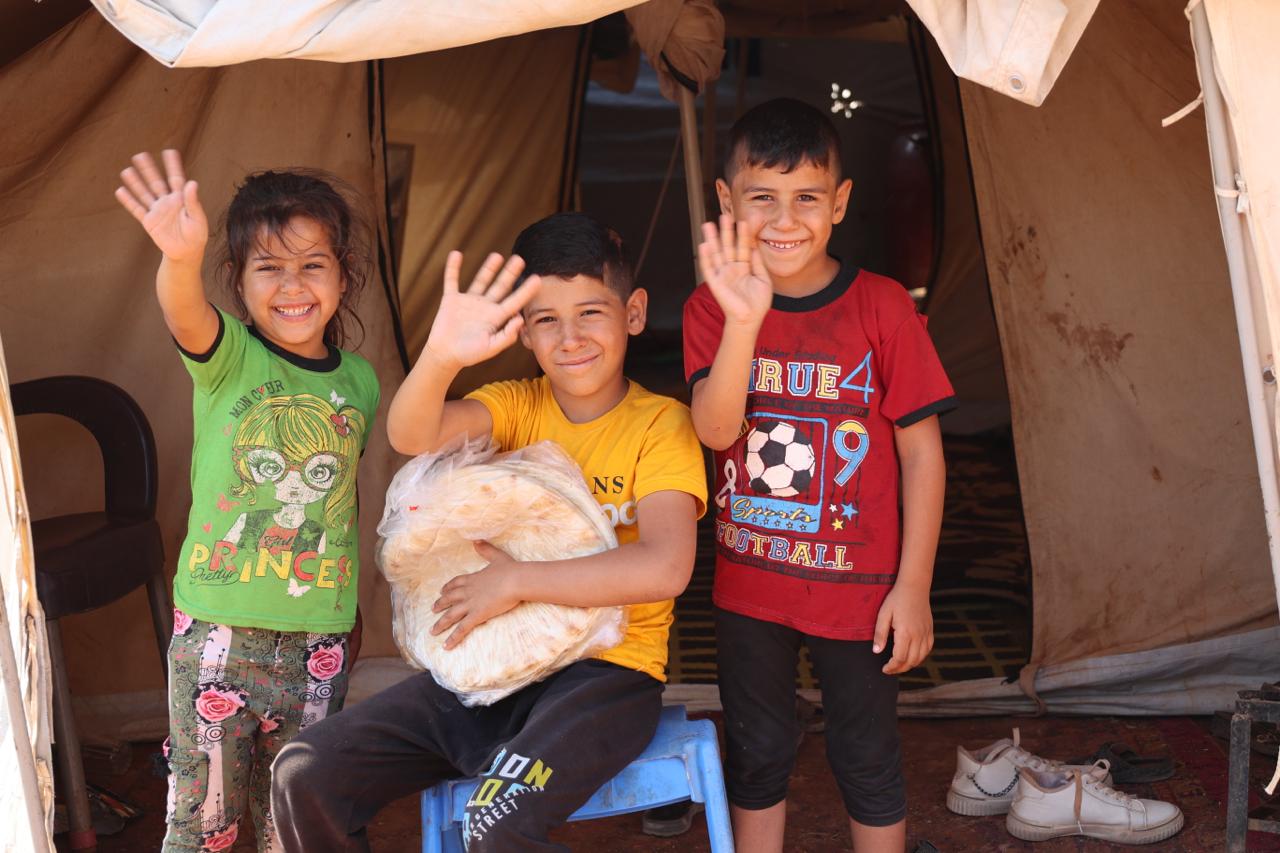Updates & Press
Blog Country Featured | October 20, 2021
Addressing Health Disparity in Yemen: A Q&A o
Author | MedGlobalComms

After more than six years of conflict, Yemen remains the world’s worst humanitarian crisis. Millions of people lack access to basic health care, and less than half of the country’s health facilities are fully functional. Over the course of the pandemic, healthcare needs have increased due to widespread acute malnutrition, ongoing conflict, poverty, and COVID-19 itself.
To address the multitude of needs across communities in Yemen, MedGlobal launched a Mobile Health Teams program in late April 2021. These Mobile Teams deliver primary health services to underserved, hard-to-reach areas in the Al Shamayateen and Al Mozea districts of the Taiz governorate. In coordination with local health facilities, the mobile teams provide consultations, lab work, medications, and follow-up care to households that lack access to health services.
Dr. Mohammed Abass, MedGlobal’s Middle East and North Africa (MENA) Regional Program Manager and former Yemen Program Manager, recently answered questions about the current health needs in Yemen and how MedGlobal is working to address them.
The people of Yemen have suffered for over 6 years, and more than 80% of the population is in need of humanitarian assistance. Could you describe the realities of the health sector and what this situation is like for the Yemeni people?
Yemen has become a living hell for its people. Insecurity, protracted displacement, lack of basic services, and the risk of a large-scale famine are some of the biggest challenges. The doubling of fuel prices has increased the cost of irrigation and water, affecting many hospitals and forcing more farmers to abandon their farms, further exacerbating the loss of livelihoods.
In the health sector, 273 districts are classified as acute. Only 51% of health facilities across the country are fully functional and those that are operational lack specialists, equipment, and medicines. Immunization coverage has decreased by 20-30% since the conflict started. Most of the population lacks access to health care due to the destruction of health facilities in their areas or from a lack of financial resources.
In addition, for the past two years, flooding has devastated southern communities and fueled the spread of deadly diseases including cholera, dengue, malaria, and diphtheria. Of the threats facing Yemen, perhaps none is as cataclysmic as COVID-19, which has been present since March – spreading unmitigated and unchecked across the country. Now, with the continued spread of COVID-19 infections, Yemen is facing an emergency within an emergency.
Throughout the country, there is a severe lack of access to health care, especially for those living in poverty-affected and rural areas. Can you speak about the health needs in hard-to-reach areas and how MedGlobal’s mobile teams are having an impact in these communities?
I still remember one instance while performing a needs assessment for the MedGlobal Emergency Health Project in Ashymaitain. The facility was at the top of the mountain, with only one health worker present and one health room functioning. During our visit, I noticed there was no medicine or medical supplies in the health facility.
At 11:00 am, an older woman came with a child on her shoulder. The child was about a year and a half years old, suffering from severe ear pain with large amounts of pus discharge coming from the ear. The mother was completely exhausted and asked the health worker to treat the child. The health worker replied that there was no medication available to help them. The woman felt very sad, so I began asking her a couple questions. She said to me that she started her journey from her village at 7:00 am, walking four hours to reach the health facility to treat her child. She then had to walk back four hours to her village without the medicine she came for.
The public health system in Yemen is majorly supported by humanitarian actors whose ability for large scale intervention has been strained over the last two years. People in rural, hard-to-reach communities only depend on humanitarian assistance and small-scale agriculture. For the last five years, priority has been placed on cholera prevention, minimum services package (MSP) control, and maternal and child health interventions.
MedGlobal’s mobile teams save the lives of affected IDPs and host communities through provision of MSPs, which were designed to improve access to health services at targeted health facilities. More than six IDP visit sites and host communities in the two priority districts of Taiz governorate were visited by our mobile teams in hard-to-reach areas.
Cuts to funding have resulted in the suspension of up to 300 health centers and forced NGOs to end their programs offering aid across Yemen. Can you describe the challenges to provide healthcare, especially within the midst of the COVID-19 pandemic?
Due to current conflict and funding cuts, the health system was impacted enormously as a result of limited financial resources to support health facility operation costs. In addition, there was no new recruitment of health workers because no wages or salaries were distributed to existing health workers over the past year. These issues resulted in very limited health workers – a negative impact to the overall services provision and primary health care program.
What are the greatest needs you see among the Yemeni population?
The biggest needs at the moment include:
- Support for the collapsed health system
- Food assistance and/or unconditional cash grants for many displaced and affected families
- Maternal and child healthcare
- Shelter for the IDP camps
- Training and motivation of health workers, especially in rural, hard-to-reach communities
- Water sanitation and hygiene (WASH) interventions to prevent future outbreaks of waterborne diseases


